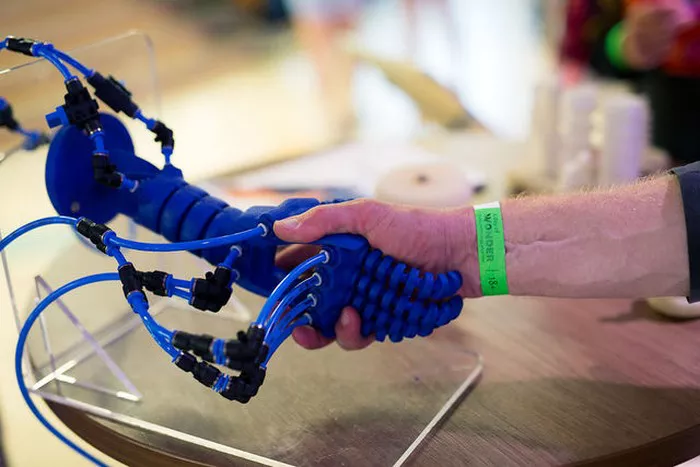Researchers have developed a light-powered soft robot capable of carrying loads through the air along established tracks, similar to cable cars or aerial trams. This autonomous soft robot can climb slopes of up to 80 degrees and carry loads more than 12 times its own weight.
Jie Yin, associate professor of mechanical and aerospace engineering at North Carolina State University and corresponding author of the study, explained, “We’ve previously made soft robots that move quickly in water and on solid ground, but we wanted to create one that can carry objects through the air across open space.” He added, “Following an established track, like aerial trams in the mountains, is the simplest way to achieve this, and we’ve now shown it’s possible.”
The soft robot is constructed from ribbon-like liquid crystal elastomers twisted like rotini pasta and joined end-to-end to form a loop resembling a bracelet. This “soft ring robot” hangs on a track made from materials like thread, wire, or cable. By looping the ring around the track multiple times, it suspends itself at an angle parallel to the track.
When exposed to infrared light placed perpendicular to the track, the section of the ribbon absorbing the most light contracts, causing a rolling motion. The heated section contracts and pulls the cooler section into the light, where it heats and contracts in turn, repeating this cycle continuously. As it rolls and twists, the soft ring pulls itself along the track.
Yin described the motion: “As the ribbon turns like a screw, it allows the soft robot to move along the track—even carrying cargo up steep slopes.”
Tests showed the robot can navigate tracks as thin as a human hair or as thick as a drinking straw. It can overcome obstacles like knots or bulges and travel up or down slopes while carrying loads exceeding 12 times its weight.
Fangjie Qi, a Ph.D. student at NC State and the paper’s first author, said, “We demonstrated the robot can follow complex routes—not just straight lines—but curves, circles, and 3D spirals in a controlled way. This adaptability in navigating intricate paths suggests practical uses for the technology.”
The team is now exploring specific applications and ways to adapt the soft robots to respond to energy sources beyond infrared light. Yin noted, “We’re considering developing soft ring robots that operate using sunlight or other external energy inputs.”
Related topics:

